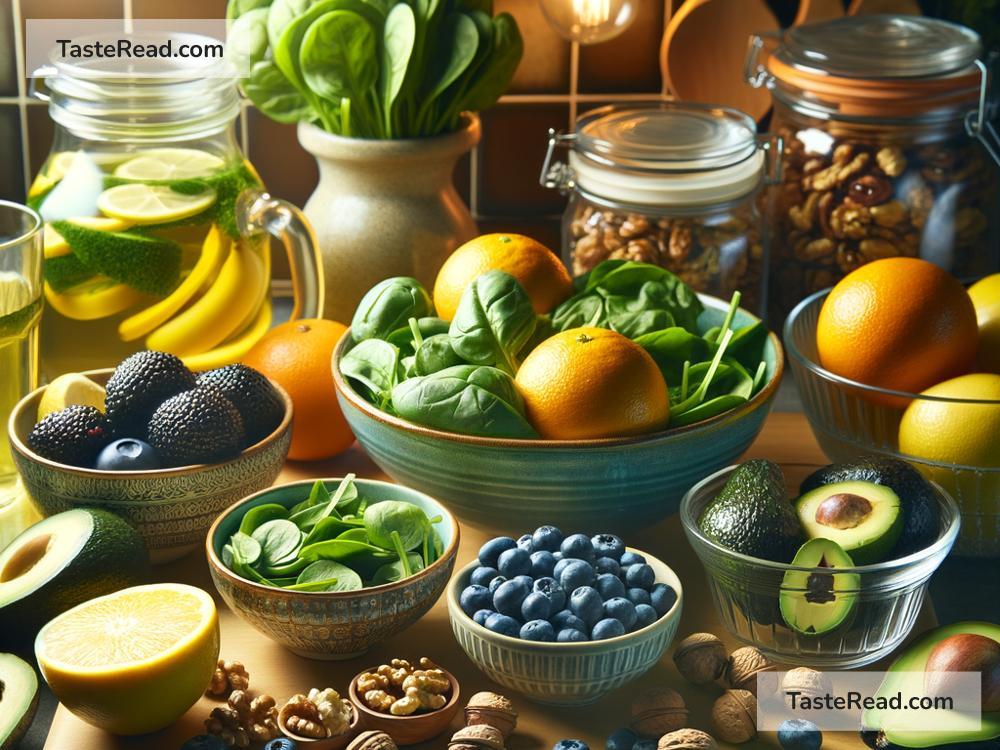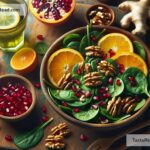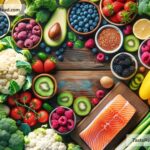Foods That Reduce the Risk of Hyperpigmentation
Hyperpigmentation is a common skin condition where dark spots or patches form on the skin. It can occur due to excess melanin production triggered by sun exposure, hormonal changes, skin injuries, or inflammation. While there are medical treatments available for hyperpigmentation, such as creams and laser therapy, your diet can also play a key role in preventing and managing this condition. Certain foods contain nutrients that improve skin health and help protect against discoloration. In this article, we’ll explore foods that can reduce the risk of hyperpigmentation and offer simple guidelines for adding them to your meals.
Why Diet Matters for Skin Health
Our skin needs essential nutrients to stay healthy and repair damage. Foods rich in antioxidants, vitamins, and minerals can fight oxidative stress and inflammation, two major factors that contribute to hyperpigmentation. Additionally, certain foods can boost your body’s production of collagen and regulate melanin production, helping to prevent uneven skin tone.
Best Foods to Reduce the Risk of Hyperpigmentation
1. Citrus Fruits (Vitamin C)
Vitamin C is a powerful antioxidant that protects the skin from free radicals caused by UV radiation and pollution, which can lead to hyperpigmentation. It also plays a key role in inhibiting tyrosinase, the enzyme responsible for melanin production.
- Examples: Oranges, lemons, limes, grapefruits, and kiwis.
- How to Add Them: Start your day with a glass of fresh orange juice or add a squeeze of lemon to salads, soups, or water for a refreshing boost.
2. Leafy Greens (Vitamin A & Folate)
Dark leafy greens like spinach, kale, and Swiss chard are rich in Vitamin A and folate, which promote healthy skin cell turnover. This helps remove dead or damaged skin cells that might contribute to hyperpigmentation.
- Examples: Spinach, kale, arugula, collard greens.
- How to Add Them: Toss leafy greens into smoothies, salads, or stir-fries. You can also sauté them with garlic and olive oil for a simple side dish.
3. Fatty Fish (Omega-3 Fatty Acids)
Fatty fish like salmon, mackerel, and sardines contain Omega-3 fatty acids, which have anti-inflammatory properties. Inflammation can exacerbate hyperpigmentation, so including these healthy fats in your diet can calm the skin and prevent discoloration.
- Examples: Salmon, mackerel, sardines, trout.
- How to Add Them: Bake or grill fish with a sprinkle of herbs and lemon juice for a delicious meal.
4. Nuts and Seeds (Vitamin E)
Vitamin E is another key antioxidant that reduces skin damage caused by sun exposure. Foods like almonds, sunflower seeds, and walnuts protect your skin cells and help retain moisture, which is essential for preventing dryness-related pigmentation.
- Examples: Almonds, sunflower seeds, flaxseeds, walnuts.
- How to Add Them: Snack on a handful of nuts, add seeds to yogurt and oatmeal, or blend them into smoothies.
5. Berries (Antioxidants)
Berries are rich in antioxidants like polyphenols and anthocyanins, which combat free radicals and repair skin damage. Regular consumption of berries can improve the skin’s texture and tone over time, reducing the chances of dark spots.
- Examples: Blueberries, strawberries, raspberries, blackberries.
- How to Add Them: Toss berries into oatmeal, yogurt bowls, or salads. You can also enjoy them as a sweet, healthy snack.
6. Green Tea (Catechins)
Green tea contains catechins, which are powerful plant-based antioxidants. These compounds help reduce inflammation and protect your skin from UV damage, which is a common cause of hyperpigmentation.
- How to Add It: Brew a cup of green tea and sip on it throughout the day. For variety, try iced green tea with a slice of lemon.
7. Tomatoes (Lycopene)
Tomatoes are rich in lycopene, an antioxidant known for its ability to protect the skin from sun damage. Lycopene minimizes the chances of developing dark spots and uneven pigmentation.
- How to Add Them: Use fresh tomatoes in salads, soups, or sauces. Roasted or grilled tomatoes can also make a flavorful addition to meals.
8. Turmeric (Curcumin)
Turmeric contains curcumin, an anti-inflammatory compound that helps combat skin redness and discoloration. It can balance melanin production and support healthy, even-toned skin.
- How to Add It: Use turmeric as a spice in curries, teas, or soups. You can also mix it into smoothies or make turmeric milk (golden milk) for a soothing drink.
Tips for Maintaining Healthy Skin Through Diet
- Stay Hydrated: Drinking plenty of water helps flush toxins from your body and keeps your skin hydrated, which is vital for reducing hyperpigmentation.
- Eat a Balanced Diet: Pair antioxidant-rich fruits and vegetables with healthy fats and lean proteins.
- Limit Sugar and Processed Foods: Sugary and processed foods can lead to inflammation and skin issues, including pigmentation.
- Avoid Harmful Additives: Reduce your intake of caffeine, alcohol, and foods with high sodium, as they can dehydrate your skin.
Final Thoughts
Hyperpigmentation can be frustrating, but taking care of your skin with the right foods can reduce its risk and even improve skin tone. Incorporate a variety of citrus fruits, leafy greens, fatty fish, nuts, seeds, berries, and other antioxidant-rich foods into your diet to help your skin look its best. Remember that healthy eating works best when combined with other skincare practices, such as wearing sunscreen and moisturizing regularly.
By making small changes to your diet, you can nourish your skin from the inside out and reduce the chances of dark spots and pigmentation. Give these foods a try and see the difference!


